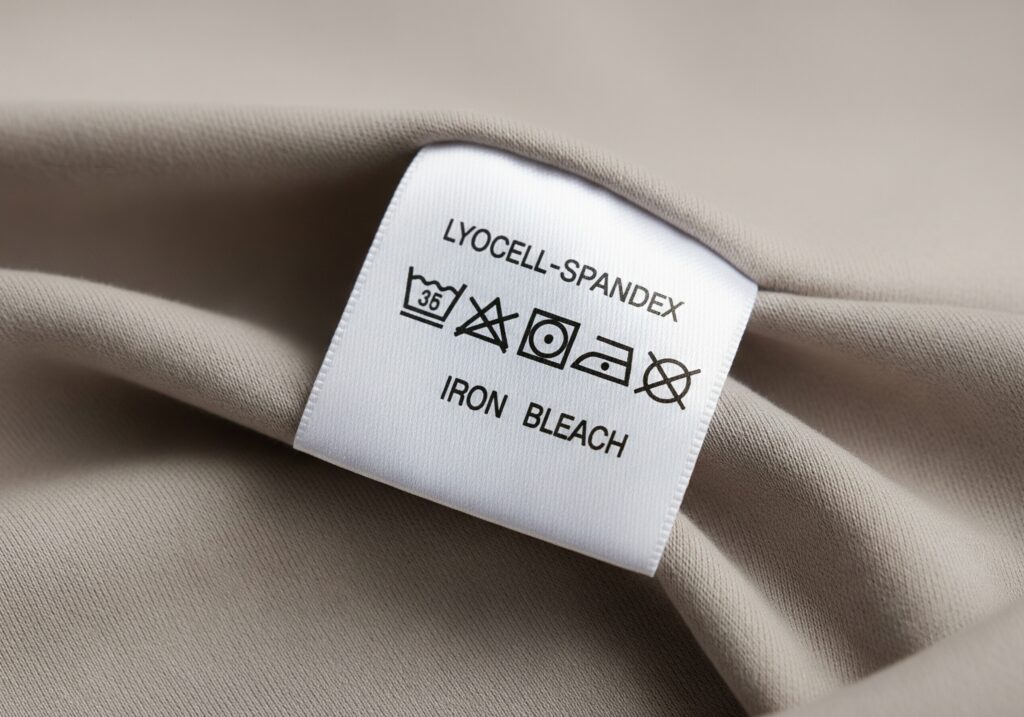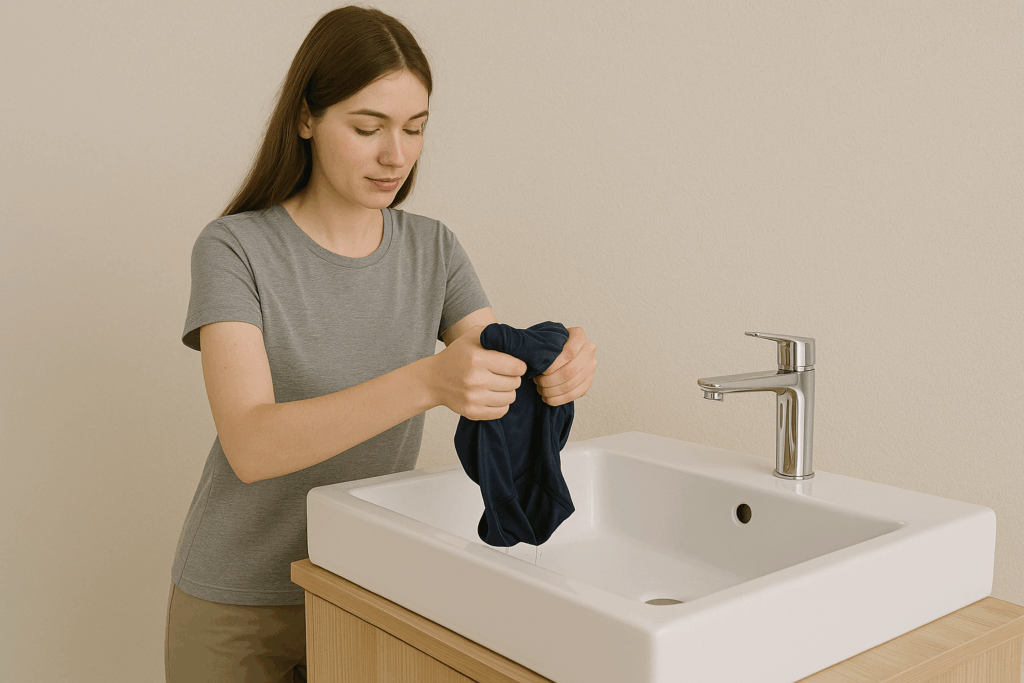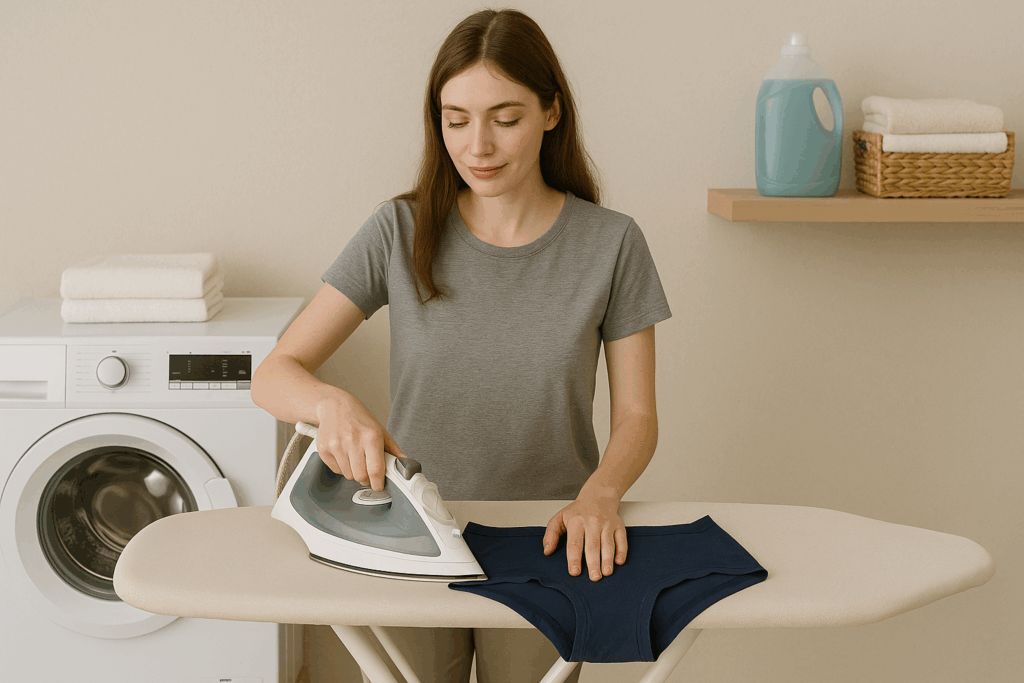When it comes to stylish yet comfortable clothes, Lyocell spandex blends have carved out quite the spot in wardrobes around the world. Combining the silky smoothness and breathability of Lyocell with the stretchy flexibility of spandex, these fabrics offer the best of both worlds. But taking care of them? That’s where many run into questions. How do you wash it without ruining that slight sheen? When should you really iron? Don’t worry — this guide will walk you through everything with friendly, expert tips backed by solid research.

Understanding Lyocell Spandex Fabric
Lyocell spandex is an innovative blend that offers both natural comfort and stretch. Lyocell itself is a type of rayon made from cellulose extracted primarily from wood pulp, processed with an eco-friendly solvent to create smooth, breathable fibers [1]. When combined with spandex—a synthetic fiber revered for its stretchability and shape retention—you get a fabric that moves with you but feels soft against your skin.
One reason this blend is so desirable is the balance of properties: Lyocell provides moisture-wicking and breathability, while spandex adds that much-needed flexibility for active wear or form-fitting garments. Clever, right? From leggings to casual shirts and even beddings featuring stretch, the mixture has found a home across types of apparel that need both comfort and resilience [2][3].
But wait, there’s more to understand here. Because of Lyocell’s cellulose base, it shares some properties with cotton but is stronger wet and less prone to wrinkles. However, it can be sensitive to heat and harsh chemicals. On the other hand, spandex fibers can degrade if mishandled during washing or drying, causing loss of elasticity [4]. Knowing these strengths and weaknesses helps you choose the right care routine to maintain your garments longer.
What is Lyocell Spandex and How is it Made
You might wonder, how do these two very different fibers come together? Lyocell is produced by dissolving wood pulp in a non-toxic solvent, then extruding it into fibers—a process lauded for being environmentally conscious compared to traditional viscose methods [1]. Spandex fibers are made from a polyurethane elastomer, notorious for their ability to stretch up to five times their original length before snapping back.
The manufacturing process involves blending spun yarns of Lyocell and spandex in precise ratios—usually around 90% Lyocell and 10% spandex—to achieve the optimal balance between softness and stretch [3]. This careful combination ensures your fabric can hug your curves yet breathe well and remain durable.
Key Properties and Benefits of Lyocell Spandex
Here’s why you’ll love the blend:
- Breathability: Lyocell’s natural cellulose structure allows your skin to breathe, making it great for warm weather or workouts [1].
- Moisture management: It efficiently wicks away sweat, reducing discomfort and keeping odors at bay [2].
- Durability: Even though it feels soft, Lyocell resists wear better than cotton in some cases [5].
- Stretch and recovery: Spandex provides superior elasticity so your clothes keep their shape wear after wear [4].
- Eco-friendly: Lyocell production involves a closed-loop process that recycles 99% of chemicals used, offering a greener alternative for environmentally conscious consumers [1].
The combination means less hassle; no sagging leggings or sticky-feeling shirts, just comfy fabric ready for a long day. But how do you wash these fabrics without ruining any of these benefits? Let’s dive in.
Common Uses and Garment Types Featuring Lyocell Spandex
You’ll often find Lyocell spandex in activewear like yoga pants, bike shorts, and trainer tops because of its stretch and breathability [3]. But its use goes beyond workout gear—think comfortable everyday shirts, lightweight dresses, and even linings in jackets. Physicians’ scrubs and uniforms increasingly use this blend for ease of movement and moisture control during long shifts [2].
Interestingly, bedding and home textiles also include Lyocell blends for softness combined with durability [6]. So, whether it’s your daily leggings or your cozy sheets, this fabric blend is quietly working behind the scenes to improve comfort.
How to Wash Lyocell Spandex Clothing Without Causing Damage
Alright, moving on to washing—arguably the most nerve-wracking part of care. You want to keep your clothes fresh and clean, yet gentle enough to avoid stretching out or shrinking those precious garments. The good news? With a bit of mindfulness, it’s entirely doable.

Selecting the Best Detergent and Water Temperature for Lyocell Spandex
Choosing the right detergent is key. Opt for a mild, liquid detergent free of bleach or enzymes. Harsh chemicals can weaken both Lyocell’s fibers and spandex’s elasticity [4][7]. Liquid detergents dissolve more easily in cooler water, helping avoid residue that can stiffen fabric.
Water temperature should lean on the cooler side—think cold to warm (30°C max). Hot water can cause shrinkage and break down spandex fibers prematurely [7]. A good rule of thumb is to wash in the coldest setting that still gets your clothes clean, which also saves energy.
Washing Machine Settings Versus Hand Washing: Which is Safer?
Here’s the deal: while hand washing is gentler and often recommended—especially for delicate Lyocell spandex blends—modern washing machines have delicate or gentle cycles that can do the trick just fine [4]. If you’re using a machine:
- Use a gentle or synthetic cycle
- Wash with similar colors to avoid dye transfer
- Turn garments inside out to protect surfaces
- Avoid overdrying and high spin speeds, which stress the fibers
Hand washing remains the gold standard when dealing with expensive or cherished fabrics to minimize wear, but a good machine setting can save time without sacrificing your clothes.
Practical Tips to Prevent Shrinking, Stretching, and Fading During Washing
Here’s the quick checklist to keep in mind:
- Avoid fabric softeners; they can degrade spandex stretch [4].
- Don’t wring or twist clothes; gently press water out instead.
- Wash less frequently when possible – over-washing breaks fibers down faster.
- Air-dry flat or hang dry with clothing shaped to original form. This prevents stretching or misshaping in the wash [7].
- Shield dark colors from prolonged sun exposure during drying to prevent fading.
Even with routine care, watch for pilling or fuzz buildup and use a fabric shaver if needed—it’s like hitting refresh without damage.
Safe Drying and Ironing Techniques for Lyocell Spandex Garments
You’ve washed your favorite leggings, now what? Drying and ironing can make or break the feel and fit of your Lyocell spandex clothes.
Recommended Methods for Drying to Preserve Shape and Fabric Quality
Skip the dryer if you want to extend your garment’s life. The heat and tumbling action shrink Lyocell and stress spandex fibers quickly [7]. Instead:
- Lay flat to dry on a clean towel, reshaping garments gently.
- Hang to air dry if space allows, but use wide hangers or padded ones to avoid fabric distortion.
- Avoid direct sunlight, which accelerates fading and weakens fibers over time [7].
If you must use a dryer, pick the lowest heat and shortest cycle, and monitor the process carefully.
When to Iron Lyocell Spandex and How to Do it Correctly Without Harm
Ironing? Only when you really need it—Lyocell resists wrinkles better than cotton but can show creases from storage or drying [5].
If ironing is necessary:
- Use the lowest heat setting on your iron (usually “synthetic” or “silk” works).
- Iron on the reverse side while the garment is slightly damp or use a pressing cloth to avoid shine and numbness.
- Avoid steam directly on spandex areas, as it may degrade elasticity [4].
Iron sparingly to prevent stress on fibers, and your clothes will keep their smooth finish without damage.

Storing Lyocell Spandex Clothes to Extend Their Lifespan
So, what’s the best way to store these garments between wears? Proper storage can make a big difference in keeping fabric looking fresh.
Best Storage Conditions to Avoid Fabric Damage and Deformation
Give your clothes room to breathe. Folding for knit leggings, shirts, or softer items is preferable to hanging, which can stretch shoulders over time [7]. If you hang dresses or tops, use padded or wide hangers to support the fabric.
Keep storage spaces cool, dry, and away from direct sunlight. Avoid humid areas that encourage mold and mildew. Also, don’t cram your closet too tightly—overcrowding can cause unwanted creases and fabric stress.
Handling Stains and Minor Repairs to Maintain Appearance and Fit
Tackle stains promptly with gentle treatments. Avoid bleach or harsh stain removers; instead, use spot cleaning techniques with mild soap and cool water [4].
For minor repairs like small tears or loose threads, fix them early to prevent widening damage. Needle and thread can be your best friends here, especially with stretch fabrics that suffer when pulls get bigger.
Troubleshooting Common Lyocell Spandex Care Issues
Even with the best care, sometimes fabric woes happen. Let’s troubleshoot.
Recognizing Signs of Fabric Damage and Appropriate Solutions
Common signs include thinning areas, color fading, loss of stretchiness, and pilling. If you notice excessive sagging, it means the spandex fibers may have broken down beyond repair [4]. Pilling can often be removed safely with fabric shavers or pill removers, restoring smoothness without harming fabric.
If color fades, remember this might be from too much sun or harsh washing, and preventing it starts with better care during washing and drying.
Techniques to Restore Shape and Elasticity After Washing or Wear
Can those stretched-out leggings bounce back? Sometimes yes, sometimes no. For mild stretching, soak the garment in cold water with a little fabric conditioner, then gently reshape and air dry flat [4]. Avoid wringing or hanging wet garments by thin straps or at corners, which stretches the fabric.
If elasticity loss is severe, it might be time to replace the item. But with careful preventative care, most Lyocell spandex garments keep their form for the long haul.
